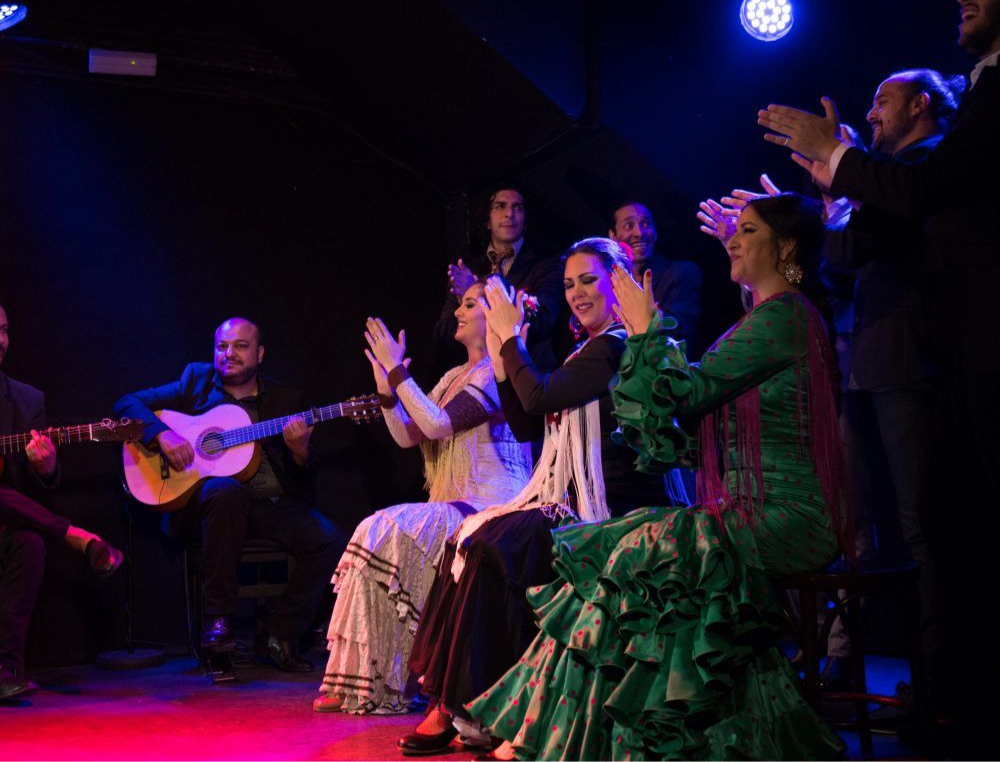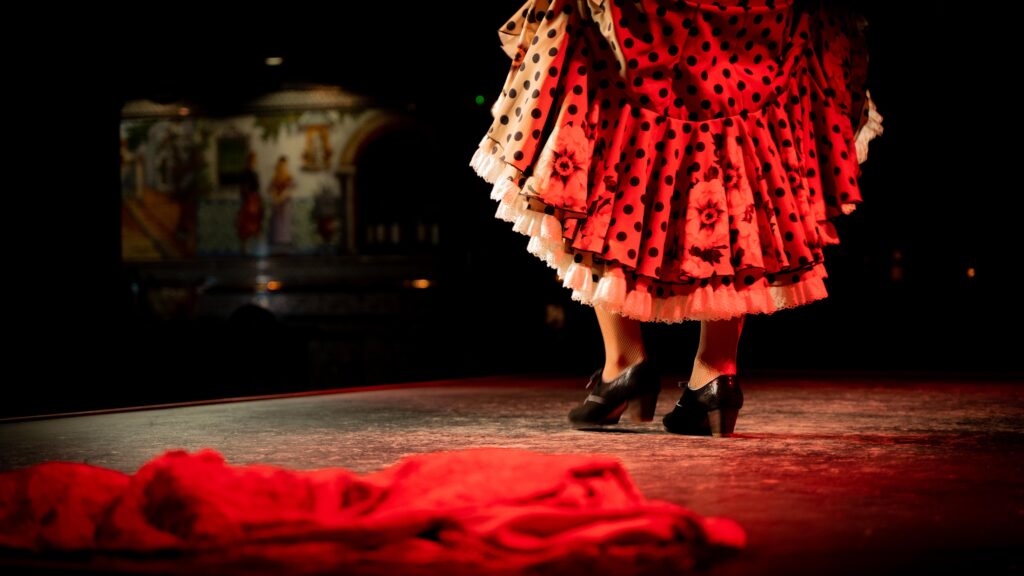

Curiosidades Flamencas
7 steps for a good bulería
The bulería is one of the most emblematic palos of flamenco and has an interesting history behind its evolution. Its origins date back to the 19th century in the region of Jerez de la Frontera, in the province of Cadiz, Andalusia, Spain. Although there is no precise narrative about its birth, bulería is believed to have originated from other flamenco palos, such as soleá and seguirilla, and has influences from Afro-Andalusian and gypsy rhythms.
7 steps you can’t miss in a bulería:
1.Know the beat and rhythm: Familiarize yourself with the beat of the bulería, which consists of 12 beats divided into 3 groups of 4. Listen and feel how the rhythm flows, as this is essential to maintain the structure during the interpretation.
2. Mastering guitar strumming: If you play guitar in bulería, practice different rasgueos and falsetas to complement the singing and dancing. Make sure your chords and rasgueos are in sync with the beat and energy of the cante.

3. Clapping: Clapping is essential in flamenco and especially in bulería. Learn the different clapping patterns and how they are synchronized with the beat. The palmas are a vital part of maintaining the rhythm and energy in a bulería.
4. Lyrics and singing: If you want to sing a bulería, learn the lyrics to a traditional bulería or compose your own. Pay attention to the meter and make sure it fits the 12-beat beat.
5. Expression and passion: The bulería is a very joyful and festive palo. It is important that you express joy and passion in your performance, whether playing the guitar, singing or dancing. Let your emotions flow through your art.

6. Interaction with other musicians and singers: Bulería is a very interactive palo in flamenco. Learn to listen to the other musicians and singers so that there is fluid communication during the performance. Being attentive to signals and glances is key to maintaining cohesion in the group.
7. Improvisation and creativity: Bulería allows for improvisation, especially in singing and guitar playing. If you are a singer, experiment with variations in lyrics and melody. If you play guitar, learn to improvise falsetas within the beat. Improvisation adds freshness and excitement to the performance.
ONE MORE TIP AS A GIFT:
Practice and more practice: The key to mastering any art is constant practice. Spend time regularly playing, singing or dancing bulerias to improve your technique and become more comfortable with this palo.
Remember that flamenco is an artistic expression with deep cultural roots, so feel free to enjoy and convey the emotion that comes with this exciting musical genre. Good luck!

The best 6 Flamenco shows in Madrid
Meet with the majesty of flamenco and its contention in the tablaos of the capital of Spain.
See shows in Madrid
